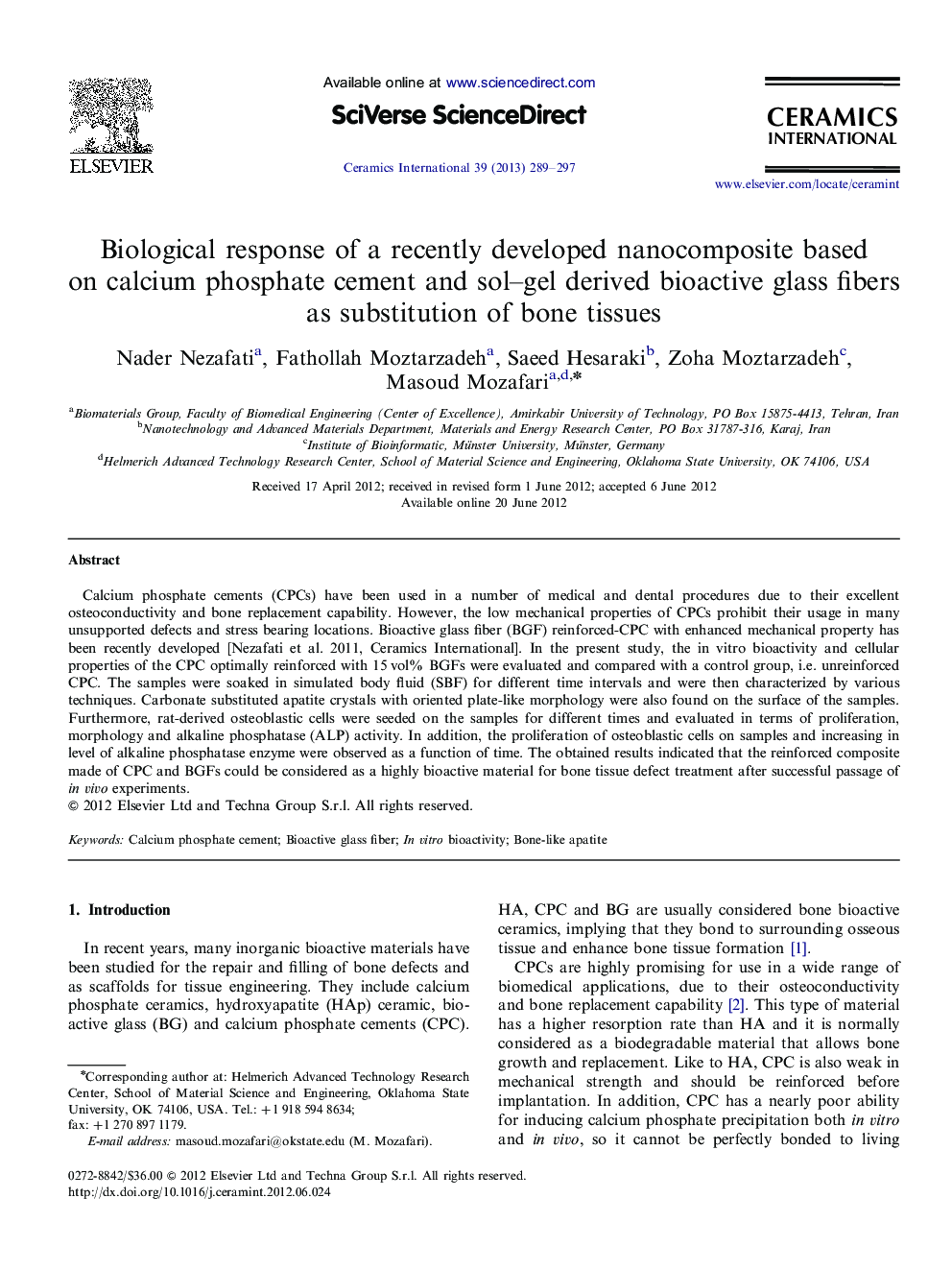| Article ID | Journal | Published Year | Pages | File Type |
|---|---|---|---|---|
| 1463462 | Ceramics International | 2013 | 9 Pages |
Calcium phosphate cements (CPCs) have been used in a number of medical and dental procedures due to their excellent osteoconductivity and bone replacement capability. However, the low mechanical properties of CPCs prohibit their usage in many unsupported defects and stress bearing locations. Bioactive glass fiber (BGF) reinforced-CPC with enhanced mechanical property has been recently developed [Nezafati et al. 2011, Ceramics International]. In the present study, the in vitro bioactivity and cellular properties of the CPC optimally reinforced with 15 vol% BGFs were evaluated and compared with a control group, i.e. unreinforced CPC. The samples were soaked in simulated body fluid (SBF) for different time intervals and were then characterized by various techniques. Carbonate substituted apatite crystals with oriented plate-like morphology were also found on the surface of the samples. Furthermore, rat-derived osteoblastic cells were seeded on the samples for different times and evaluated in terms of proliferation, morphology and alkaline phosphatase (ALP) activity. In addition, the proliferation of osteoblastic cells on samples and increasing in level of alkaline phosphatase enzyme were observed as a function of time. The obtained results indicated that the reinforced composite made of CPC and BGFs could be considered as a highly bioactive material for bone tissue defect treatment after successful passage of in vivo experiments.
Graphical AbstractCalcium phosphate cement optimally reinforced with bioactive glass fibers (15Vol.%). Bone-like apatite tended to form on the surface of samples. Cell culture study indicated that the cells actively secrete ECM. There was no significant difference in formation of formazon between samples. At the 7th day, the cell activity on the fiber contained composite was higher.Figure optionsDownload full-size imageDownload as PowerPoint slideHighlights►Calcium phosphate cement optimally reinforced with bioactive glass fibers (15Vol.%). ► Bone-like apatite tended to form on the surface of samples. ► Cell culture study indicated that the cells actively secrete ECM. ► There was no significant difference in formation of formazon between samples. ► At the 7th day, the cell activity on the fiber contained composite was higher.
